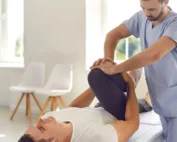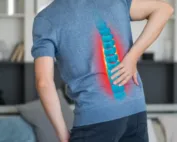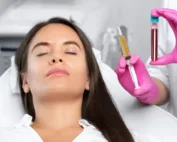Introduction:
Exploring the realm of stem cell therapy unveils a revolutionary avenue in medical science, promising hope for individuals seeking advanced treatment options. With its transformative potential, understanding the intricacies of stem cell therapy and its critical aftercare becomes paramount for maximizing its benefits. Let’s delve into the essential aspects of post-treatment care, ensuring a smooth journey towards recovery and optimal health outcomes.
Key Takeaways:
- Stem cell therapy requires careful aftercare to optimize results.
- Immediate post-treatment priorities include following doctor’s instructions and avoiding anti-inflammatory drugs.
- Weeks 1-2 involve managing inflammation and gradually reintroducing movement.
- Weeks 3-8 focus on gentle exercise and avoiding high-impact activities.
- Effective communication with healthcare professionals is crucial throughout the process.
What is the aftercare routine following stem cell therapy?
After stem cell therapy, adhere to post-op instructions, avoid anti-inflammatory drugs, manage inflammation with ice, gradually reintroduce movement, and communicate closely with healthcare providers.
Stem Cell Therapy Aftercare
If you’ve discovered that stem cell therapy might help you, learning everything you can about the process is a great idea! Stem cell therapy is an exciting new medical technique with a host of possibilities. Although specifics depend heavily on the details of your case, the following aftercare concerns are likely to come into play after you receive treatment:
Immediately After Treatment :
- Your top priority is obeying all of the post-op restrictions set forth by your doctor.

- In general, you should stay away from anti-inflammatory medication, rest the affected area for one to two days, and get ready to begin physical therapy once your doctor says you’re ready for it.
- Pain in varying levels is standard on the first few days after stem cell treatment. This should become less of a problem as time goes on.
The First Two Weeks:
- You’re very likely to see significant inflammation in the area that was treated. This is a normal side effect of increased immune system activity.
- White blood cells and other critical healing substances begin to build up in the treated area.This is all standard preparation that primes the pump for the stem cells to go to work.
- After you’ve passed the resting period recommended by your doctor, the treated area may be ready to handle light everyday movement. Pay attention to what your body tells you and do not force anything that feels uncomfortable or painful.
- It’s a good idea to limit the number of trips you take on staircases and lift no more than is necessary for this period. (These cautions are especially important if you received treatment in any of your joints – hips, knees, shoulders, and so on.)
- Pushing yourself to do some walking can help alleviate soreness, particularly for spinal cases.
- The best way to treat spasms or muscle aches in this period is with heat. Inflammation should be treated with ice. Exercise moderation with your heat treatments, especially if you have a high pain threshold.
- You don’t want to accidentally injure yourself even a little bit!
- Anti-inflammatory drugs hurt stem cell function. This means that you’ll want to avoid using nonsteroidal anti-inflammatory medications during this period. This includes aspirin, ibuprofen, and naproxen.
- Look out for natural remedies and supplements that might have an anti-inflammatory effect should be avoided. Examples include arnica and turmeric.
You may find kinesiology tape and other therapeutic tools useful for pain management in the first weeks following your treatment. Talk to your doctor in advance about the most suitable aids for you.
The Third and Fourth Weeks:
- By this point, your doctor will probably recommend starting a no-impact exercise regime designed to improve your range of motion.
- Sample activities include gentle walks, pool jogging, or using an elliptical machine. The importance of keeping this activity gentle must be stressed.
- The stem cell knee injections in your body need time to develop into specialized cells. You do not want to impede this process by pushing yourself too hard too quickly.
The Fifth and Sixth Weeks:
- Once you’ve reached this stage, you may feel ready for more ambitious physical therapy. Do not overestimate your capabilities!
- This is the time to start adding very light resistance to your workouts, not to leap into arduous new routines. By this point, your stem cells have started building new tissue.
- The increased blood flow brought on by low-impact exercise is useful, but the cells don’t need any excess stress. This might be the right time to extend your therapy routine to include moderate stretching activities (like Pilates or yoga).
Do not add in any exercises that cause compression, like squats, leg lifts, calf raises, twists, and so forth.
The Seventh and Eighth Weeks:
By this point, you can safely start doing aerobic exercises without putting your stem cells at risk. Continue to pay particular attention to the area of treatment and discontinue your workout if you feel any pain. Heat and ice are still best for treating pain and inflammation at this stage.
After The Third Month:
The stem cells introduced to your body will be at their most potent between the third and sixth month after treatment. Keep supporting their work by shielding them from undue stress. You can exercise to make your joints stronger, but do not push yourself too far at the gym or over-exert yourself at home.
Communication is Always Vital:
- Stem cell therapy is so new that it’s almost certain to be a first-time experience for almost all patients. Both the treatment and recovery processes are significantly different from ordinary surgery. Feel free to ask plenty of questions before and after treatment.
- If you have a physical therapist helping you, take the time to verify that they understand the proper post-op protocols for stem cell therapy. This is important because many of the joint exercises in the physical therapist’s toolkit are less helpful or even harmful for stem cell patients.
- Above all else, communicate regularly with your doctor. Taking a positive step toward better health through stem cell therapy is a great decision. You want to be as well-informed as possible to get the very most out of it.
At OCW, we have full-time experts who will be happy to talk to you about the benefits of stem cell therapy.
Call us now to learn more, to find out if you are a candidate for the therapy, and to schedule a free consultation.
Recent Blogs
Why Physical Therapy Should Be Your Secret Weapon Before Surgery
Surgery, while sometimes necessary, can be a daunting prospect. The recovery process is often lengthy and filled with unknowns. But what if there was a way to optimize your body's readiness for surgery and [...]
Spinal Decompression Therapy: A Non-Surgical Option for Herniated Discs
The discs in your spine act as cushions between the vertebrae, providing flexibility and absorbing shock. When the outer wall of a disc weakens or tears, the soft inner core can bulge or push [...]
PRP for Knees_ A Promising Option for Pain Relief and Mobility – word
For many people, knee pain is a constant companion, limiting mobility and impacting quality of life. Traditional treatments like pain medication and physical therapy can offer relief, but they may not address the underlying [...]





